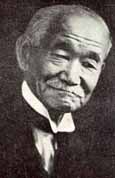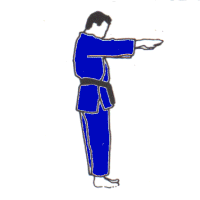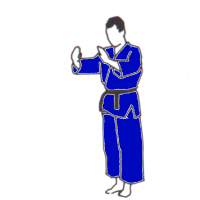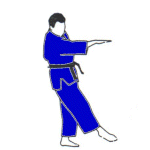The principle of "mutual welfare and benefit" requires that we learn to fall as well as throw. In addition to the safety and confidence this practice imparts, it is an essential part of understanding the more advanced techniques of Judo. Unless one understands the correct positioning of uke (the one receiving the throw) it is difficult to fully master the action of tori (the thrower). The traditional order of training is to move from the simple to the more difficult. At first practice falling from a low position and gradually move higher. First fall in place, then add movement. In the beginning move slowly and carefully, then increase speed. First fall by yourself, then have a partner throw you and repeat these steps (start with a low throw, no movement, and slowly). For more information see The Study of Falling or Understanding Ukemi. Ukemi is about receiving the fall gracefully. In judo, and life, this is important so that you can rise up to continue the struggle. We learn that you can benefit from the lesson of the fall rather than suffer from it. Falling in judo teaches us to get to acceptance quickly. We must not deny that we were thrown, dwell on it, feel angry or depressed about it, or try to justify it. We must accept it as a lesson and move on before we are pinned where we lie. Sure we try to avoid the setback, and we understand the potential danger of a fall, but we learn to accept it in a way that do es not paralyze us. In fact it frees us to take risks and show more courage and commitment in our actions. It allows us to remain in control of our future and not give in to unfortunate circumstances. In addition, it keeps us humble and grounded. A Turkish proverb says, "He who sleeps on the floor cannot fall out of bed." On the Importance of Ukemi by Jigoro Kano Nowadays one does not see the same clear-cut technique as one used to do. All adopt a very stiff and defensive style and they appear to be entirely preoccupied with the idea of winning their contest, without any sign of aspiring to higher accomplishment. One who aims high for the future must not be concerned with present loss or gain. The most important object in Judo training is to develop speed and free movement of the body. If one enters a contest with the sole idea of not being defeated, automatically the body becomes stiff and defensive – an unsuitable state for effective sharp action. Whereas, if one regards all as a matter of captivating speed and free movement of the body, without being seriously concerned about being thrown, sooner or later one will develop the desired qualities, and be able to apply them for attack or defense, as opportunity offers. To become truly undefeatable in Judo one should not rely on one's strength; for when one meets a stronger opponent one will surely be beaten. There are various defensive methods, but the principle is to evade the opponent's strength or by changing one's position to reduce the effect of the strength applied. Another method is by pushing or pulling, to weaken the force the opponent intends to apply. To be able to effect any of these defensive actions, one must acquire a free and quick movement of the body. As I have often said if one hates to be thrown, one cannot expect to become a master of the art. By taking throws time after time, one must learn how to take falls and overcome the fear of being thrown. Then one will become unafraid of being attacked and be able to take the initiative in attack. Only by following this manner of training can one learn true Judo waza. Contest and practice, which are both means of training, should be conducted in the way to develop speed and free movement of the body. |





